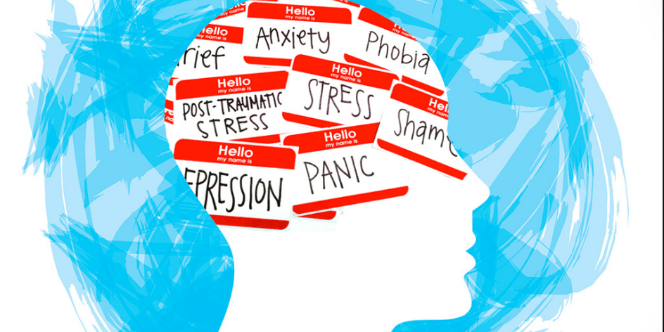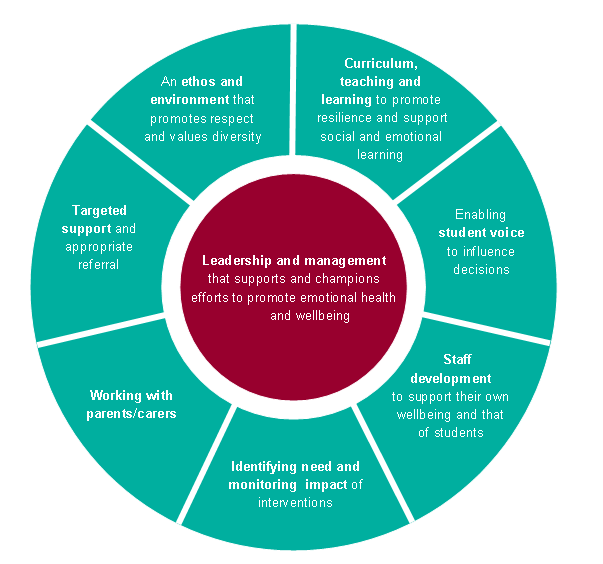Supporting Children to be Mentally Healthy: A Whole School Approach (CPD Session)
Written by Elisa Fellone-Scott, Year 3 student trainee on the BA (Hons) EYE with QTS programme

In this article I will be discussing the information for the recent training session ‘Supporting children to be Mentally Healthy: A Whole School Approach’. The speaker at the CPD Session, Professor Jonathan Glazzard was clearly passionate about mental health, being a Principal Researcher in the Carnegie Centre of Excellence for Mental Health in Schools. This is a great research project supporting schools in making positive changes to the educational system through providing information and resources on mental health (Leeds Beckett University, 2019)
The World Health Organisation (2003:1) defines mental health as ‘a state of well-being in which every individual realizes his or her own potential, can cope with the normal stresses of life, can work productively and fruitfully, and is able to make a contribution to her or his community.’
Often people think about teenagers and adults when poor mental health is discussed, however, it is essential to understand how poor mental health can impact children from the early years of life. The National Health Service (2017) highlighted the child mental health is continually rising and reported that 5.5% of children between the age of two and four experienced a mental disorder. This raises questions as to why mental health is not discussed more in primary schools and early childcare settings if it is a growing concern (Nagel, 2016).
Potential Causes for Poor Mental Health
Poor mental health in children can be a result of a range of factors including, individual disability, family conflict, neglect, social deprivation, poor attachments and school culture. It is essential to acknowledge that children are often more aware of things happening in their environment that many people believe. Furthermore, school culture is a big cause for stress due to testing, expectations and being in a new and busy environment. Meyer’s (2003:8) model of stress explains that although stress may affect everyone, people of minority tend to struggle with more stress due ‘distal’ and ‘proximal’ stress. Distal stress occurs when an individual experience violence due to discrimination, on the other hand, proximal stress is experienced when the individual anticipates that they we be discriminated against. It is fundamental that practitioners are aware of the different types of stress to get a true understanding of the child’s lifestyle and mental health.

A Whole School Approach
To improve mental health, it is essential that all areas of school life are involved. This model taken from Public Health England (2015) highlights that leadership and management teams are fundamental in implementing effective strategies. To promote an ethos and environment grounded in respects and diversity, schools should represent all faiths and cultures. This can be done through multi-cultural displays and stories demonstrating different traditions and beliefs. Curriculum teaching and learning can support mental health through providing opportunities for the children to discuss their feelings and reflect on their experiences. Student Voice is evident through providing autonomy in the classroom, this could be choosing stories to read to class representatives. The saying ‘you can not pour from an empty glass’ is clear when it comes to teaching. Teacher’s mental health needs to be healthy to ensure that they can help others around them. Therefore, the staff should be given training on how to support their own mental health as well as the children’s mental health and wellbeing. Identifying a need through recognising the signs of mental health issues and using interventions to help the child’s mental health. It is important to note that in specific cases the practitioner should refer them onto specialists to help the child. Finally, it is essential that practitioners work alongside parents to help them support their child in their home life, this support could include converting a part of the child’s room into a calming area or encouraging the parents to help the child reflect on their feelings.
Signs of Mental Health Issues
- Physical signs for example, bruises, cuts.
- Become withdrawn
- Changes in behaviour
- Decline in progress
- Lack of personal care
- Low self-esteem
- Lower attendance in school
- Self- blame
- Tiredness/ lethargic
Strategies
Scaling
Ask the child to rate an aspect of their life, for example, their teamwork skill from one to ten. Once the child has answered the question, the practitioner should ask questions such as,
- Where would you say you are now?
- What are you doing that makes you think you are at this number?
- What will tell you that you have moved one point up the scale?
- What might you be doing then that you are not doing now?
- ‘Where on the scale do you hope to get to over the next [e.g. week]?
- What will you be doing then that’s different?’
Exception Finding aims to find a time where the child was not struggling to discover what could be the trigger for the problem.
- When are the times that (the problem) doesn’t happen as much?
- Tell me about a time when (the problem) happened but didn’t last as long?
- When are the times when other people would notice you (e.g. behaving, working, being kind…) in a good way?
- When were things a little bit better for you? What was different then?
- Tell me about a time when (e.g. you stayed calm) in that difficult situation?
Complimenting is focusing on small things that the child has done well to help their self-esteem.
- ‘It seems to me you’ve somehow been able to keep going with that, when things have been difficult, that you’re a person who can keep going even when things are tough. Is that true about you?’
- ‘Something I’ve noticed today is that you’ve answered every question I asked you, maybe with an “I don’t know” answer, or maybe something else’.

Peer Mentors (Nagel, 2016) research found that children are more likely to talk to their peers about problems as they fear that adults will tell their parents. It is suggested that schools could train some pupils to be key listeners and understand when to inform the teacher of any problems.

Meditation helps children relax and gives them the opportunity to reflect on their day in a non-stressful way. These can be short daily sessions or long less frequent session.

Calming Jar- Put water and glitter into a jar and the child turns the jar and watches the glitter fall through the liquid, this is beneficial as it calms the child down.

Nature- There is a vast amount of research on the benefits of the outdoors on child mental health for example, children tend to speak to more children when they are playing outdoors meaning that they are more likely to build strong relationships.
Useful Links
- Wellbeing Measurement Framework for Primary Schools (Evidence Based Project Unit, 2017) is a framework in partnership with Anna Freud National Centre for Children and Families. This framework a method of measuring how mentally healthy children are by working with the child to answer statements such as ‘I break things on purpose’ based on a never, sometimes and always scale. Link: https://www.corc.uk.net/media/1506/primary-school-measures_310317_forweb.pdf
- Mentally Healthy School Website (2019) is sponsored by health charities such as Young Mind to provide information on mental health as well as resources to support children with mental health issues. Link: https://www.mentallyhealthyschools.org.uk/
How do you support children wellbeing in your setting?
References
- EVIDENCE BASED PROJECT UNIT, 2017. Wellbeing Measurement Framework for Primary Schools [online]. Available from: https://www.corc.uk.net/media/1506/primary-school-measures_310317_forweb.pdf [Accessed 27 November 2019].
- LEEDS BECKETT UNIVERSITY, 2019. Carnegie Centre of Excellence for Mental Health in Schools (online) Available from: https://www.leedsbeckett.ac.uk/carnegie-school-of-education/research/carnegie-centre-of-excellence-for-mental-health-in-schools/ [Accessed on 27 November 2019].
- MENTALLY HEALTHY SCHOOLS, 2019. Mentally Healthy Schools [online]. Available from: https://www.mentallyhealthyschools.org.uk/ [Accessed 27 November 2019].
- Meyer, I., 2003. Prejudice, social stress, and mental health in lesbian, gay, and bisexual populations: Conceptual issues and research evidence [online]. Available from: https://oce-ovid-com.edgehill.idm.oclc.org/article/01756958-201308001-00002/HTML [Accessed 26 November 2019].
- National Health Service, 2017. Mental Health of Children and Young People in England, 2017 [online]. Available from: https://digital.nhs.uk/data-and-information/publications/statistical/mental-health-of-children-and-young-people-in-england/2017/2017 [Accessed 26 November 2019].
- P, NIGEL., 2016. Mental Health Matters: A Practical Guide to Identify and Understanding Mental Health Issues in Primary School. London: Bloomsbury.
- PUBLIC HEALTH ENGLAND. 2015. Promoting children and young people’s emotional health and wellbeing: A whole school and college approach. Public Health England.
- World Health Organisation, 2004. Promoting mental health: concepts, emerging evidence, practice (Summary Report) [online]. Available from: https://www.who.int/mental_health/evidence/en/promoting_mhh.pdf [Accessed 26 November 2019].

One response to “Supporting Children to be Mentally Healthy”
I love this – thank you for sharing Elisa. Having some good sources of ‘go -to’ information is vital when you are teaching young children!